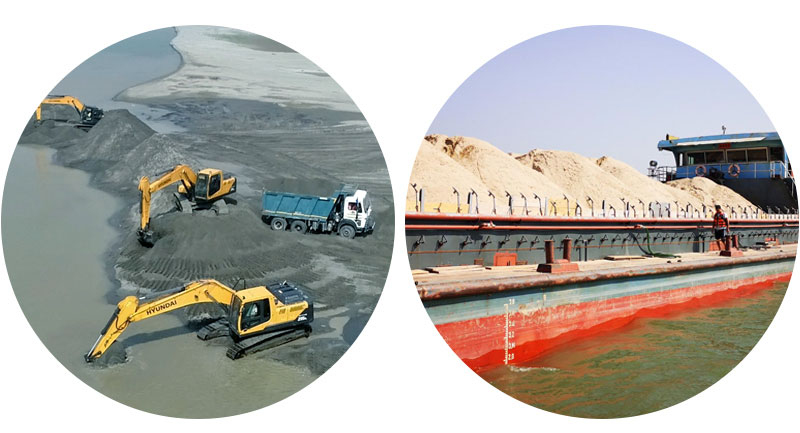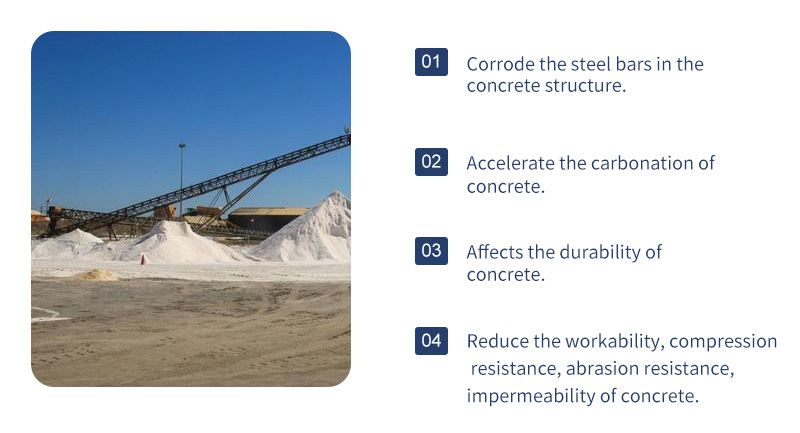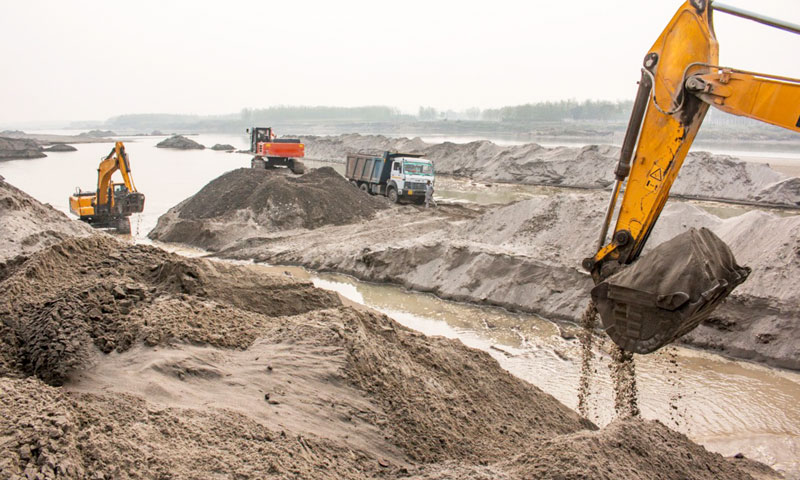River sand refers to the sand found in rivers and their floodplains. It is a kind of fine particle formed by the erosion and friction of water flow in the natural state of rock for a long time. Sea sand refers to the sand eroded by sea water without seawater desalination, mostly from the confluence of oceans and rivers.

Natural river sand has the advantages of good grain shape, low mining cost, firmness and durability, and is widely used in the construction industry. However, with the shortage of river sand resources, unqualified sea sand enters the market. So what is the difference between river sand and sea sand, and how can we tell the difference?
Negative effects of sea sand
We know that sea sand without desalination contains a relatively high content of chloride ions. Improper use will cause serious corrosion of steel bars, resulting in a sharp decline in the durability of concrete structures, and may cause serious engineering accidents.
In China, the Ministry of Housing and Urban-Rural Development stipulates that sea sand used for fine aggregate in reinforced concrete must be desalinated so that its chloride ion content is less than 0.06%. So what negative impact does untreated sea sand have on construction projects?

1.The composition of sea sand contains chloride salts, and the separation of chloride ions will corrode the steel bars in the concrete structure and reduce the durability of the concrete structure.
2.Chloride salts in sea sand crystallize and expand to accelerate the carbonation of concrete.
3.The sulfate in sea sand is mainly Na2SO4, which is prone to chemical reaction with cement to produce ettringite, resulting in concrete volume expansion and cracking, which seriously affects the durability of concrete.
4.The main component of shellfish is CaCo3. This type of sea sand generally does not react chemically with cement, but shellfish are generally in the form of flakes, with low strength, prone to miscracking, and poor bonding ability. More shell content will reduce the workability, compression resistance, abrasion resistance, impermeability and other properties of concrete.
Differences between river sand and sea sand

Appearance
From the color point of view, the color of sea sand is relatively dark, dark brown. Of course, there are also slightly lighter colors. River sand is generally bright yellow.
From the perspective of particle fragments, sea sand generally has fragments such as shells. River sand is generally directly excavated from the river, so it will be mixed with pebbles and fine sand. These small pebbles have been scoured by the river for a long time, and their edges and corners are relatively round.
Specification
The physical characteristics of sand mainly include fineness modulus, hardness and roundness. The fineness modulus is an index used to measure the degree of coarseness and fineness of sand. According to the size of the fineness modulus, it can be divided into three categories: coarse sand (3.7-3.1), medium sand (3.0-2.3) and fine sand (2.2-1.6).
The grading grades of river sand and sea sand in different regions are quite different. River sand will be classified into various grades during the screening process, while sea sand has no clear classification standard yet. Generally speaking, the fineness modulus and hardness of river sand are larger, the roundness is better, and the surface is smoother; while the fineness modulus of sea sand is relatively small, but the hardness is higher, the roundness is better, and the surface is smoother.
Hand feeling
Grab a handful of sand with force, then slap it off. If the sand is sticky and cannot be patted clean, it is usually sea sand. If the sand is not sticky and can be patted clean, it is usually river sand.
Taste
This is the easiest way. Grab a handful of sand and put it in the water to taste the water. The salty one is sea sand, and the light one is river sand.
Ingredients
The main mineral components of river sand are quartz, mica, etc., which contain more impurities. Because river sand has been transported over long distances and repeatedly washed and screened by water, its compositional maturity is relatively high (referring to the degree to which detrital materials have been modified in composition).
The main mineral component of sea sand is also quartz, and its component maturity is higher than that of river sand, but it often contains clasts such as shells and has a high mud content. In addition, sea sand also contains relatively high levels of chloride ions and certain levels of sulfate and sulfide.
Uses
River sand is commonly used to produce construction materials such as concrete, mortar, and pavement. Because the river sand particles are relatively round and have good cohesiveness and strength, it is suitable for the production of building materials that require high strength and durability.
Sea sand is rarely used in construction projects, but it can be used as filler in land reclamation projects.
How to identify high-quality river sand?
Generally speaking, the coarser the sand, the higher the strength of the prepared concrete and mortar. However, if the strength is too high, it will also lead to some bad consequences, such as cracks on the ground leveled with it. In the market, the finer the sand, the cheaper the price, so beware of some unscrupulous merchants using fine sand instead of coarse sand. So, how to identify high-quality river sand?

First, put your hand into the bag to grab a handful of sand. After opening the hand, if the sand is clumpy, it indicates that there is much mud in the sand and the quality is poor. If the sand spreads out in small pieces, it is of good quality.
Second, the sand should be in a wet state, not too dry. If the sand is very fine and dry, like soil, it cannot be used either.
Third, it can be distinguished from the color. Normal sand color is yellow, if the sand color is very black, then it means that there is a lot of soil, it is better not to use it.
The big difference between river sand and sea sand determines that customers need to identify the quality of sand when purchasing natural sand. This is because sand is one of the most important raw materials for the production of building materials. It will not only affect the quality of finished products such as concrete and mortar, but also affect the quality of the entire project. So, if necessary, find an expert to help you identify and purchase high-quality sand!
